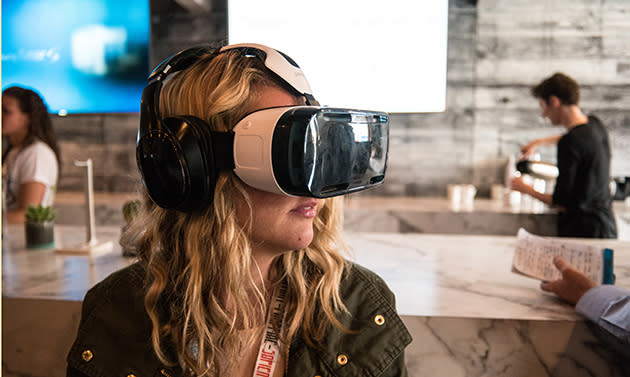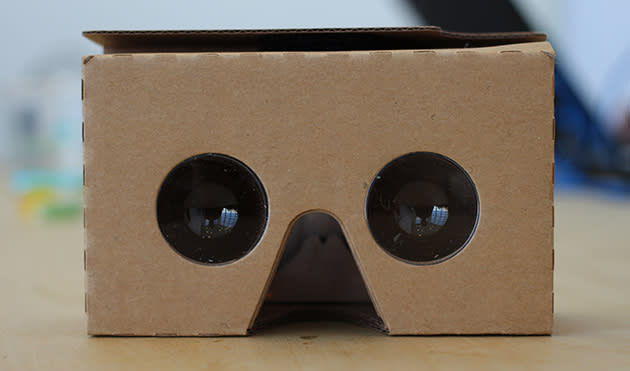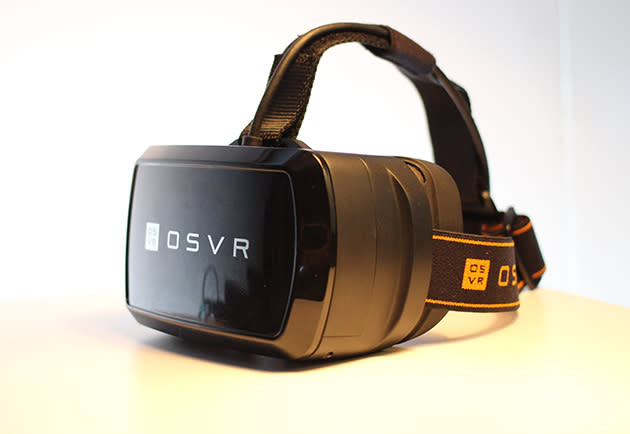Virtual Reality Is Coming and It Will Change The World In 2016

Photo credit: Flickr Nan Palmero
Ever wanted to visit Tokyo? How about the moon? Still too close? What about Mars? Pilot an F-15, ride on roller coasters that literally defy the law of gravity, or watch movies on a 300 foot screen. With new virtual reality (VR) technology, all of these experiences will soon become possibilities. And while virtual reality has previously been somewhat of a pipe dream still reserved to video-game developers and members of some R&D departments, 2016 will be the year when virtual reality actually becomes a reality for the average consumer. If virtual reality takes off, everything, from gaming to video entertainment to commerce, will change.
An Overnight Success 10 years In The Making
Virtual reality has been an idea in developers and people's minds for a while. I mean, who hasn't fantasized at least once about diving into a completely new world by "jumping into" your TV screen and becoming a part of your movie or video game's world? Well, with VR you won't quite be diving into the TV screen, but rather strapping it onto your head, or kind of: VR hardware mostly works through a headset and accompanying earphones and hand controllers. However, what this technology will be able to do is to is to completely submerge you in the world shown on its screen.
Now, some forms of the technology already exist. Google Cardboard, for example, is literally a cardboard cutout that folds into a headset and uses your cellphone as a screen.

Photo credit: Flickr
It's compatible with most Android phones, and Google is encouraging developers to release apps using the technology. Google 360 allows viewers to have a VR experience of Google Maps, and a good number of VR video games, like Insurgent VR and Zombie Shooter VR are already on the market. In a somewhat controversial move, New York Times subscribers in the US recently received a Google Cardboard cutout with their Sunday paper, as well as directions to watch a 3D VR video through the NYT website, announcing that the future of journalism will likely also involve VR. But Google Cardboard is just the beginning.

Photo credit: Flickr
There's at least three VR devices in the making that are due to come out in 2016, and whose VR experience promises to run laps around anything you can achieve with your phone and a cardboard cutout.
2016: The Year Of Virtual Reality
The Facebook-owned venture, Oculus Rift, probably represents the most anticipated device for VR enthusiasts. After much speculation and waiting, Facebook finally announced this summer that the X-Box-compatible headset will come out during the first quarter of 2016.

Photo credit: Flickr (Older version of Oculus Rift shown)
Oculus Rift will come with a pair of integrated headphones designed to maximize the VR experience, and it will come with an X-Box controller, although Oculus is also designing its own handset to be fully integrated with the technology. Oculus has also announced a partnership with Microsoft, and the two companies promise that streaming and gaming will be seamlessly available on the Rift through an X-Box or Windows 10 platform. Many think both console and PC gaming will be revolutionized by the technology.
Gaming
But X-Box will not be the only gaming platform offering VR in the near future. Sony is developing its own VR headset, formerly known only as Project Morpheus, and recently revealed under the name PS VR. The headset will be compatible with Play Station, and is also due to be released in the first half of 2016. With high definition graphics, ultra-sensitive motion detectors, and integrated sound systems, the technology will likely also usher in its own set of dedicated 3D VR games.

Photo credit: Flickr
A third VR headset due to come out really soon is HTC's Vive. According to some sources, HTC Vive may come out as early as this December, although it will probably won't be widely available until early 2016. Built with a gyrosensor and accelerometer, the HTC-Vibe differs from the Oculus Rift in that it uses laser sensors to track your motion instead of a camera on the headset. It also will come with its own wireless hand controllers.

Photo credit: Flickr
Challenges Ahead
Although VR will inevitably face some challenges next year, not least of which is its high projected price, the fact is that important changes are coming for VR. With three high-power headsets developed by leaders in the industry coming to the market early next year, there is sure to be a boom of new dedicated applications, from gaming to 3D movies. And who's to say that only entertainment will be reached by the virtual reality revolution?

Photo credit: Flickr
The possible applications are truly diverse: As alternate universes become available inside the world of a VR headset, the travel industry may be profoundly changed, offering voyages to distant parts of the world by just downloading an application – you'll be there much faster than if you take a 20 hour flight to New Delhi, say. And the best part of it all is that there's no jet-lag. In a completely different field, NPR has reported how nuclear scientists use virtual reality technology to train for emergency scenarios that would be difficult or impossible to reproduce otherwise.
The future is here
To give just one more example, real estate developers might soon be using VR technology to make tours easier and more efficient. As the technology improves, so too will its applications. Uses of VR are endless and easy to imagine: education in virtual environments, defense training, engineering virtual factories, healthcare, communications, you name it. All that's really missing is for the technology to be widely available, and that's just around the corner.
How do you think the world will change after the advent of virtual reality?
